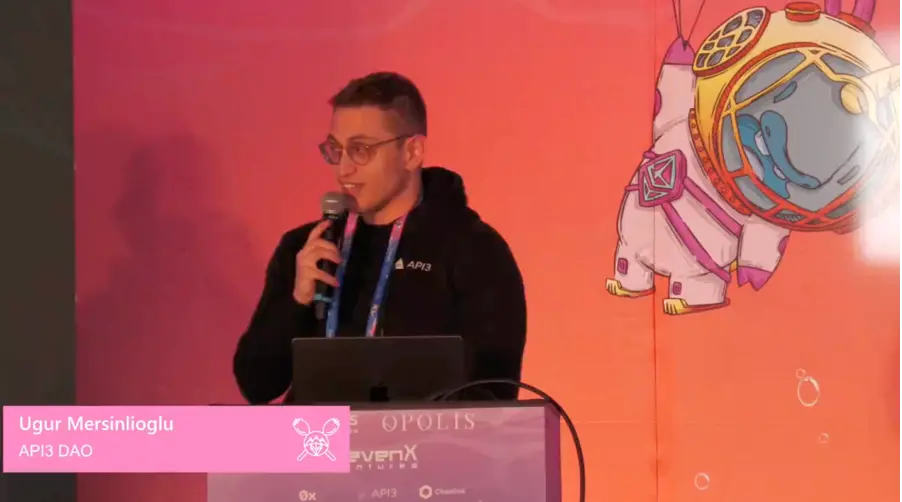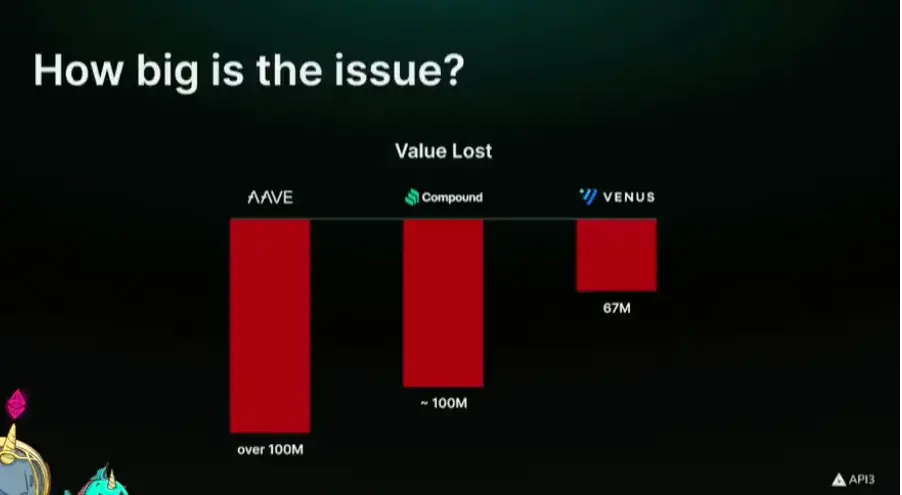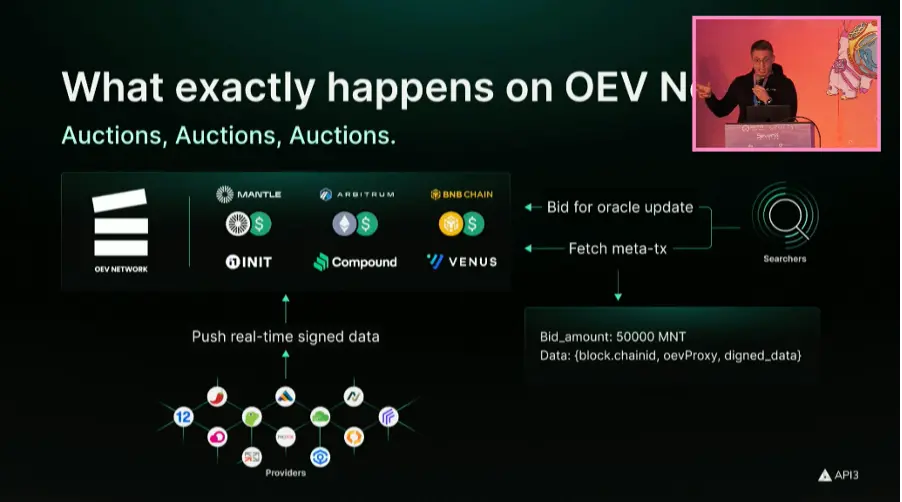API3: Oracles Are More Than Just Price Feed Machines
The role of oracles is to transfer off-chain data to on-chain, with high precision and low latency price feed services ensuring the normal operation of DeFi protocols. At the annual ETH Denver conference, API3's strategic leader Ugur Mersinlioglu delivered a keynote speech titled "Capturing Oracle Extractable Value through specialized Order-Flow Auctions," clearly describing in non-technical terms that oracles are not limited to price feed services; they can create more value.

API3 is an oracle project, but it is slightly different from traditional oracle projects. Most traditional oracle projects aggregate data through third parties for price feed services, while API3's data services are operated directly by data providers without intermediaries. The oracle space is highly competitive and not very profitable, so API3 has introduced a new concept: OEV (Oracle Extractable Value) Network. OEV is a subset of MEV, and similar to MEV, it extracts value through oracle updates. The market size for OEV is quite substantial; for instance, AAVE has lost over $100 million due to OEV, Compound has lost nearly $100 million, and Venus on the BNB chain has also lost over $60 million.

When users deposit collateral, such as ETH, into a lending protocol, these ETH have a certain value, and users can borrow 80% of that deposit's value. There is a concept of health in the lending market, where a user's health = collateral / debt. When a user's health is greater than 1, it indicates they are healthy. At a certain moment, if the value of the collateral drops significantly, and the user's health falls below 1, they will be liquidated. All of this is determined by oracles; once a user becomes eligible for liquidation, the protocol typically rewards liquidators with 5% to 10% of the value of the user's collateral for executing the liquidation.
During the liquidation process, liquidators need to bribe validators to have their transactions executed first. So, how much can liquidators earn? Monoceros mentioned in his book about MEV that "liquidation is straightforward to execute, so competition is fierce, meaning it's common to give 99.9% of the liquidation to the validators."
A real case occurred in January with Aave, where a user was liquidated for $4.2 million. The liquidation reward was $141,477, and just for the liquidation position, the liquidator could earn $141,477. However, to execute the liquidation, they bribed others and spent $141,416, resulting in a mere profit of $60 for the liquidator.

What API3 aims to do is auction this update right to liquidators and return the auction fees to dApps using API3. This is achieved through the OEV Network, where liquidators observe impending liquidation transactions across various chains and then auction on the OEV network. When the price actually reaches the liquidation point, the OEV network grants the liquidator the right to update the price. Thus, price feeds can be updated not only through oracle nodes but also by selling cryptographic signed data, allowing external parties to update it.

Returning to the Aave example, if the liquidator obtained the update right for the liquidation through an auction on the OEV network, Aave could almost reclaim the entire $141,477. For dApps, this represents a new source of income; they could use this money to establish an insurance fund, distribute it to lenders or stakers, or return it to users. For users, this would lead to a more efficient lending market.
By using API3 and joining the OEV network, dApps only need to execute a new contract to obtain more granular data updates and reclaim OEV losses that would otherwise flow to third parties. This concept is very similar to MEV blockers, which essentially change users' RPC to their own RPC products and promise not to extract MEV from users' transactions. In reality, MEV blockers actively extract MEV from users' shares and return 90% to users, keeping 10% for themselves.
In his speech, Ugur Mersinlioglu used simple examples to explain why the OEV network should be created and the logic behind its implementation. He wanted to convey that oracles are not just price feed machines; they can create more value. Currently, API3 provides over 150 data sources covering 17 chains, and the OEV network is in the testnet phase, with the mainnet set to launch soon. We have reason to believe that API3's OEV network can create a more efficient financial market and achieve a win-win situation.









